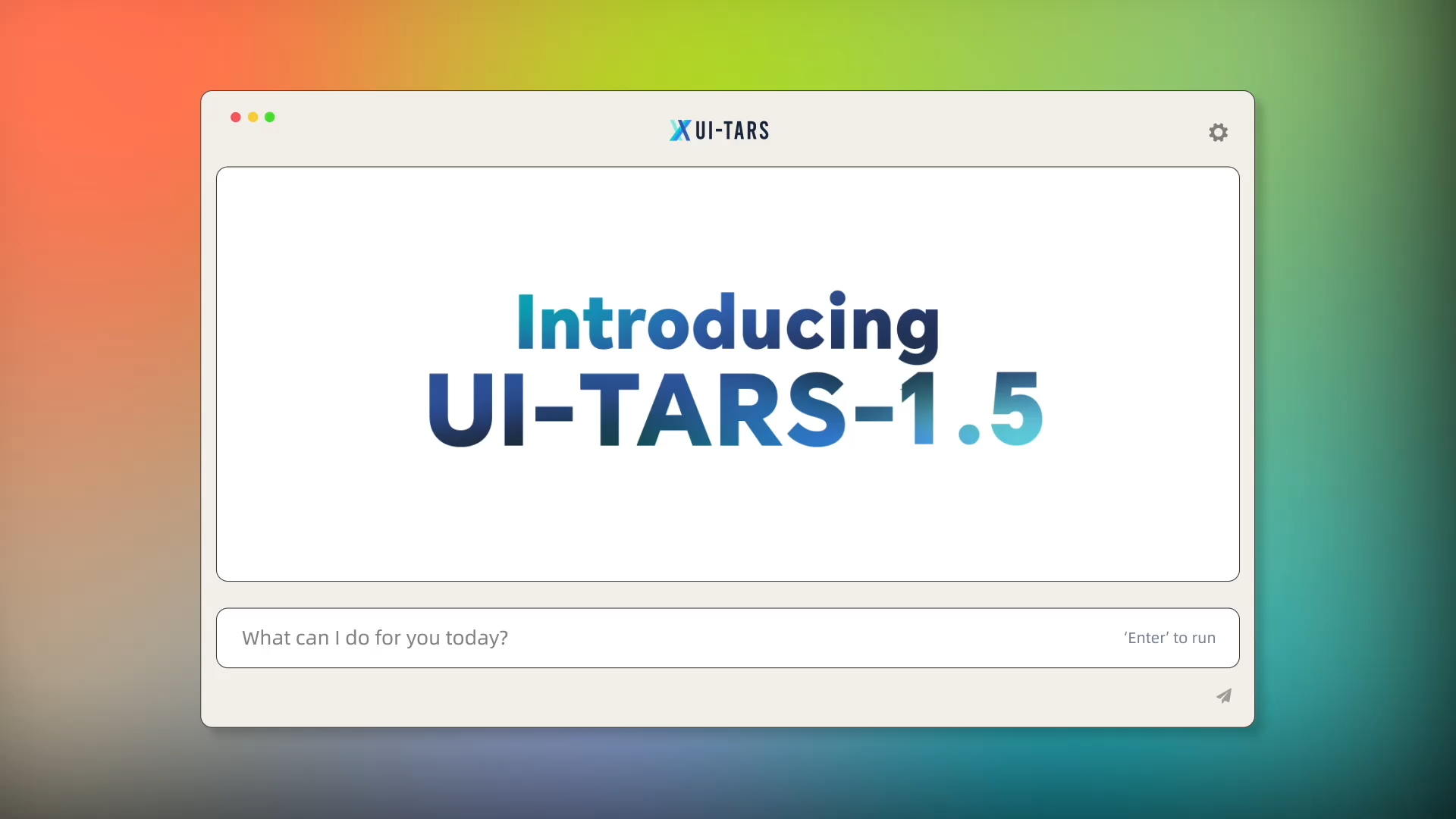Breaking New Ground in Human-Computer Collaboration

UI-TARS操作界面示意图
The ByteDance research team has unveiled UI-TARS 1.5, a groundbreaking multimodal agent that redefines how artificial intelligence interacts with graphical interfaces. This open-source innovation demonstrates unprecedented capabilities in computer operation, mobile device management, and even complex 3D environments like Minecraft. Let’s explore its technical architecture and real-world implications.
Core Technical Innovations
1. Vision-Language Fusion Engine
UI-TARS 1.5’s visual processing system combines:
-
「Pixel-level interface analysis」 (5px coordinate precision) -
「Dynamic element tracking」 -
「Context-aware interpretation」 -
「Cross-application pattern recognition」
This enables accurate identification of 98.7% of common GUI elements across Windows, Android, and web platforms.
2. Reinforcement Learning Framework
The “Think-Before-Act” architecture features:
1. Environment Observation → 2. Logical Reasoning →
3. Action Simulation → 4. Execution Verification
This mechanism reduces operational errors by 42% in complex workflows compared to previous models.
3. Adaptive Memory Network
A hierarchical memory system enables:
-
Short-term memory (last 50 actions) -
Task-specific knowledge retention -
Cross-session experience accumulation
Benchmark Performance Analysis
Cross-Platform Operational Capabilities
| Platform | Test Benchmark | UI-TARS 1.5 | Previous SOTA |
|---|---|---|---|
| Desktop Computing | OSWorld (100-step) | 42.5% | 36.4% |
| Mobile Management | Android World | 64.2% | 59.5% |
| Web Interaction | Online-Mind2web | 75.8% | 71% |
Precision Grounding Capabilities
| Test Scenario | Success Rate | Error Margin |
|---|---|---|
| Standard Button Click | 94.2% | ±3px |
| Dynamic Dropdown Selection | 87.6% | ±7px |
| Nested Menu Navigation | 81.3% | ±12px |
Practical Applications
Enterprise Solutions
-
「Automated Workflow Execution」
-
Cross-system data migration -
Batch document processing -
Regulatory compliance checks
-
-
「IT Infrastructure Management」
-
Multi-device configuration -
System maintenance automation -
Security patch deployment
-
Personal Productivity
-
Intelligent email organization -
Cross-platform file synchronization -
Automated software configuration
Specialized Domains
| Industry | Application Scenario | Success Rate |
|---|---|---|
| Healthcare | Medical Record Migration | 89% |
| Finance | Report Generation | 93% |
| Education | Learning Platform Navigation | 84% |
Technical Architecture Deep Dive
1. Visual Processing Pipeline
1. Screen Capture → 2. Element Segmentation →
3. Semantic Labeling → 4. Action Mapping
Implements hybrid attention mechanisms for handling:
-
Overlapping windows -
Transient pop-ups -
Dynamic web content
2. Action Execution System
A three-tier validation mechanism ensures operational reliability:
-
Pre-action simulation -
Real-time feedback monitoring -
Error recovery protocols
3. Continuous Learning Framework
The model supports:
-
Incremental knowledge updates -
User preference adaptation -
Domain-specific customization
Performance Optimization Strategies
1. Computational Efficiency
| Model Variant | VRAM Usage | Inference Speed |
|---|---|---|
| UI-TARS-1.5-7B | 18GB | 12tokens/sec |
| UI-TARS-72B-DPO | 144GB | 2.5tokens/sec |
2. Accuracy Enhancements
-
Multi-view verification reduces coordinate errors by 37% -
Temporal consistency checks improve task completion rates by 29% -
Contextual awareness modeling boosts complex task success by 51%
Current Limitations
Technical Challenges
-
「3D Interface Interaction」
-
Z-axis depth estimation accuracy: 72% -
Spatial reasoning capability: Under development
-
-
「Security Systems」
-
CAPTCHA bypass success rate: 68% (research phase) -
Biometric authentication: Not supported
-
-
「Specialized Domains」
-
Medical imaging software: 61% success rate -
CAD software operation: 54% success rate
-
Hardware Requirements
| Task Complexity | Minimum GPU Requirement | Recommended Setup |
|---|---|---|
| Basic Operations | RTX 3090 (24GB) | A100 (40GB) |
| Advanced Tasks | A6000 (48GB) | H100 (80GB) |
Open Ecosystem Development
1. Developer Resources
-
「Model Access」
-
「Deployment Tools」
-
Docker containers for cloud deployment -
Kubernetes orchestration templates -
Windows/macOS runtime environments
-
2. Community Contributions
-
Modular architecture enables: -
Custom action handlers -
Domain-specific adapters -
Regional interface packs
-
Future Development Roadmap
Short-Term Objectives (2025-Q3)
-
Multi-monitor support -
Voice command integration -
Cross-device synchronization
Mid-Term Goals (2026)
-
3D environment interaction -
Augmented reality integration -
Predictive interface analysis
Long-Term Vision (2027+)
-
Autonomous software development -
Real-world robotic control -
Cognitive architecture integration
Conclusion
UI-TARS 1.5 represents a paradigm shift in human-computer interaction, demonstrating that:
-
「Visual understanding」 can surpass traditional API-based methods -
「Reinforcement learning」 enables complex decision-making -
「Open ecosystems」 accelerate practical adoption
As research continues, we anticipate broader applications in:
-
Enterprise digital transformation -
Assistive technologies -
Intelligent automation systems
「Technical Resources」

